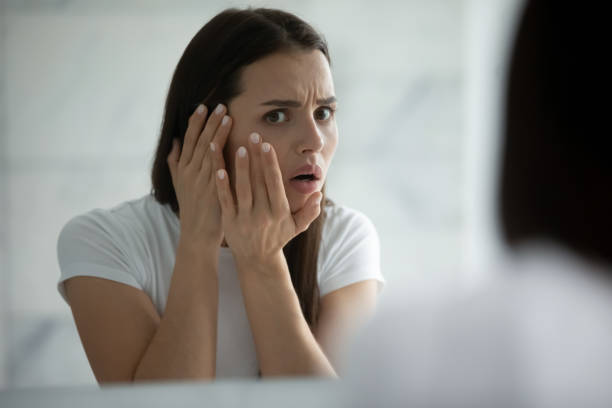
You bought the serum. Now what?
You spotted it under bathroom lighting. That little patch on your cheek. You swore it wasn’t there yesterday.
Then you made the mistake of zooming in with your phone camera.
Panic? Mild.
Impulse purchase? Immediate.
Now you’re staring at a sleek bottle of dark spot corrector wondering: Does this go before or after moisturizer?
Is it going to burn my face off?
Am I about to undo 3 years of skincare progress in one reckless pump?
Take a breath. Let’s get you a plan.
Step 1: Know What You’re Treating (and Why It’s So Stubborn)
Let’s set the record straight: Not all dark spots are the same. And not all products know what to do with them.
You could be dealing with:
- Sun damage (thanks, high school tanning beds)
- Post-acne marks that just. won’t. fade.
- Melasma from hormones, pregnancy, or “life in general”
- Leftovers from a rash or injury
Your dark spot corrector doesn’t need to erase your entire skin history—it just needs to regulate melanin and support healing. That’s it. That’s the job.
Step 2: AM Routine—Yes, You Still Need Sunscreen
Let’s start with your mornings. It matters more than you think.
Here’s the order of operations:
– Cleanser
Foamy, creamy, gentle—whatever doesn’t make your face feel like it’s been sandblasted.
– Optional: Hydrating Toner or Mist
If you’re fancy. Not required. But it helps actives absorb better.
– Dark Spot Corrector
This is the moment. A pea-sized amount. Target the spots, don’t slather it like lotion. It’s a corrector, not a facial.
– Moisturizer
Your barrier deserves protection too. Hydration also keeps irritation from sneaking in.
– Sunscreen
Broad-spectrum, SPF 30+, and every. single. day.
Why? Because UV exposure triggers melanin. That means one sunny walk could undo weeks of progress. Yes—even if it’s cloudy.
Step 3: PM Routine—Where the Real Work Begins
At night, your skin’s in repair mode. That’s your chance to go a little deeper—but not too deep.
– Cleanse Again
Yes, again. Especially if you wore makeup, SPF, or city air all day.
– Apply the Dark Spot Corrector (Again)
Consistency > intensity. Use it sparingly. You’re not icing a cake.
– Moisturize Like You Mean It
This step is not optional. Active ingredients can be drying. A solid moisturizer calms things down and supports healing overnight.
Step 4: Don’t Play Mad Scientist
You know the vibe: You get excited and start layering all the things. Acids. Retinols. Exfoliants. Serums with mystery peptides and 16-step K-beauty routines.
Please don’t.
Combining multiple harsh actives with your dark spot corrector is a one-way ticket to:
- Barrier damage
- Peeling
- Redness
- Wondering why your skin hates you
Stick to one or two actives at a time. Let them work. Rotate slowly if you must experiment.
Step 5: How Long Until You See Results?
Ah yes, the million-dollar question.
Here’s the reality check:
- Week 1–2: Maybe some irritation or “purging” (especially if there’s retinol involved)
- Week 3–4: Slight fading. You’ll doubt it’s working.
- Week 6+: Progress. You’ll see it. Maybe subtle, maybe dramatic—but it’s happening.
And yes, take photos. Same lighting. Same angle. Weekly. Because your mirror lies, but your camera? Brutally honest.
Step 6: Adjust, Don’t Panic
Tingling? Mild redness? Normal.
Burning? Crusting? Face falling off? Not normal.
If your skin’s staging a protest:
- Cut back to every other night
- Layer it after moisturizer to buffer the effect
- Pause any other actives until your face stops freaking out
Still unsure? Get a derm involved. You don’t get bonus points for suffering in silence.
Final Thoughts: Fading Spots Is a Journey—Not a Race
A dark spot corrector is a tool—not a magic wand. The goal isn’t perfection. It’s progress. Brighter skin. Fewer flare-ups. More confidence under harsh lighting.
So give your product time. Give your skin grace. And give yourself a high-five for even caring this much about your face.
Because doing nothing guarantees your spots stay. Doing something—correctly—is how they fade.